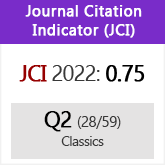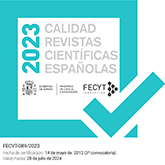Ophidians and summer heat: a necessary emendation in Pliny’s text (Nat. XXIX 71)
DOI:
https://doi.org/10.3989/emerita.2019.14.1904Keywords:
Pliny, Natural History, snakes, indirect tradition, text emendationAbstract
According to Pliny (Nat. XXIX 71), the snake is not a poisonous animal, but could become one during a specific period of time by influence of the moon (neque anguis uenenatus est nisi per mensem luna instigatus). The reading per mensem makes no sense because the ophidians remain in lethargy during winter. Therefore, per mensem cannot be referring to just any month of the year. A passage by Gargilius Martialis and a witness of the indirect tradition of the Naturalis Historia support the correction per messem. This way, the passage becomes transparent and Pliny’s doctrine is consistent with reality: snakes become poisonous in summertime, at the time of harvest (messis).
Downloads
References
Baehrens, W. 1922: Sprachlicher Kommentar zur vulgärlateinischen Appendix Probi, Halle (Saale) (repr., Groninga, 1967).
Bodson, L. 1986: «Observations sur le vocabulaire de la zoologie antique: les noms de serpents en grec et en latin», Documents pour l'histoire du vocabulaire scientifique 8, pp. 65-119.
Cantó, J. et alii 2002: Plinio. Historia Natural. Madrid.
Capitani, U. y Garofalo, I. 1986: Gaio Plinio Secondo. Storia Naturale. IV. Medicina e farmacologia. Libri 28-32, Turín.
Ernout, A. 1962: Pline l'Ancien. Histoire Naturelle. Livre XXIX, París.
Ferraces Rodríguez, A. 2015: Curae quae ex hominibus atque animalibus fiunt. I. Introducción y edición crítica, Santiago de Compostela.
Fischer, K. D. 2000: «Q. Gargilius Martialis», en R. Herzog y P. L. Schmidt (eds.), Nouvelle histoire de la littérature latine 4, Turnhout, pp. 307-311.
Font Quer, P. 2003: Plantas medicinales. El Dioscórides renovado, Barcelona.
Gaillard-Seux, P. 2012: «Le serpent, source de santé: le corps des serpents dans la thérapeutique gréco-romaine», Anthropozoologica 47, pp. 263-289. https://doi.org/10.5252/az2012n1a7
Ian, L. y Mayhoff, C. 1967: C. Plinius Secundus. Naturalis Historia, vol. IV, Stuttgart.
Jacques, J. M. 2002: Nicandre. Oeuvres, II. Les thériaques. Fragments iologiques antérieurs à Nicandre, París.
Jones, W. H. S. 1963: Pliny. Natural History, Vol. VIII. Libri XXVIII-XXXII, Cambridge, MA.
Keil, G. 1999: «Gargilius Martialis», en LexMA IV, Stuttgart, col. 115-116.
König, R. y Hopp, J. 1991: C. Plinius Secundus d. Ä. Naturkunde. Lateinisch-deutsch. Bücher XXIX/XXX, Múnich-Zúrich.
Lenz, H. O. 1856: Zoologie der alten Griechen und Römer, Wiesbaden.
Littré, M. É. 1850: Histoire Naturelle de Pline, avec la traduction en français, Tome second. París.
Maire, B. 2002: Gargilius Martialis. Les remèdes tirés des légumes et des fruits, París.
Powell, J. G. F. 2007: «A New Text of the Appendix Probi», CQ 57, pp. 687-700. https://doi.org/10.1017/S0009838807000638
Quirk, R. J. 2005: «The Appendix Probi as a Compendium of Popular Latin: Description and Bibliography», CW 98, pp. 397-409. https://doi.org/10.2307/4352974
Reeve, M. D. 2007: «The Editing of Pliny's Natural History», RHT n. s. 2, pp. 107-179. https://doi.org/10.1484/J.RHT.5.101276
Rodgers, R. H. 2010: L. Iuni Moderati Columellae res rustica. Incerti auctoris liber de arboribus, Oxford. https://doi.org/10.1093/oseo/instance.00148409
Stadler, H. 1910: «Gargilius 1», en RE Pauly-Wissowa VII, Stuttgart, cols. 760-762.
Stotz, P. 1996: Handbuch zur lateinischen Sprache des Mittelalters. Band 3. Lautlehre, Múnich.
Trinquier, J. 2012: «Serpents buveurs d'eau, serpents oenophiles et serpents sanguinaires: les serpents et leurs boissons dans les sources antiques», Anthropozoologica 47, pp. 177-221. https://doi.org/10.5252/az2012n1a5
Downloads
Published
How to Cite
Issue
Section
License
Copyright (c) 2019 Consejo Superior de Investigaciones Científicas (CSIC)

This work is licensed under a Creative Commons Attribution 4.0 International License.
© CSIC. Manuscripts published in both the printed and online versions of this Journal are the property of Consejo Superior de Investigaciones Científicas, and quoting this source is a requirement for any partial or full reproduction.All contents of this electronic edition, except where otherwise noted, are distributed under a “Creative Commons Attribution 4.0 International” (CC BY 4.0) License. You may read here the basic information and the legal text of the license. The indication of the CC BY 4.0 License must be expressly stated in this way when necessary.
Self-archiving in repositories, personal webpages or similar, of any version other than the published by the Editor, is not allowed.














